UX Design | Prototyping | Interaction Design
Designing a simple-to-use vocabulary-building application to help learners improve vocab skills.
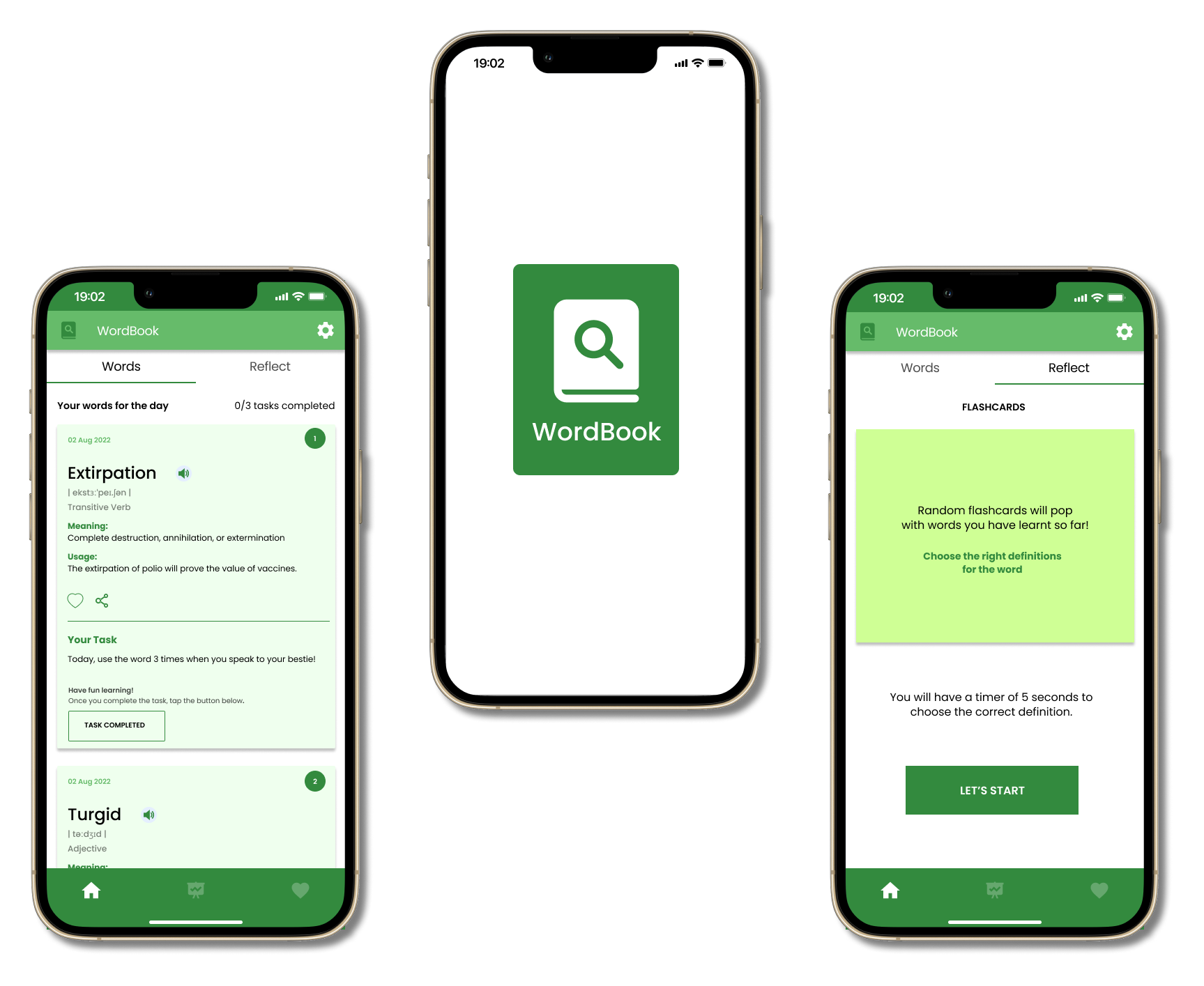
August-October 2021 (3 months)
User Research: User Interviews, Empathy Mapping, Journey Mapping
UX Design: Wireframes, Sketching, Prototyping, Interaction Design
Google UX Certification project
Solo project
Building vocabulary is one of the most important tasks in life for any individual. Many use applications to improve their vocabulary skills to strengthen their communication. However, the existing applications struggle to induce and curate a long-lasting enjoyable, and engaging experience.
I designed an application that curates a task-oriented concept (real-world gamification) for individuals who desire and seek to advance their vocabulary skills by learning unknown words and also helping them engage more in the learning process.

The motivation for me to pursue the design of this application and user research roots in an observation I made during a casual conversation with my friends. After which, I observed learners’ interaction with conventional tools to build vocabulary during an ethnographic study. That led me to ideate a few concepts that could potentially improve the learner’s experience to advance vocabulary skills.
I conducted one-on-one tea-table talks and interviews in informal settings to understand the pain points, desires, emotions, and overall experience associated with vocabulary learning.
🎯I had three goals in this phase before I could dive into ideating the concept for design:
To build a reliable hypothesis for design, it was essential to understand the user's motives to improve their vocabulary skills.
Parallelly, it was vital to note their feelings and experiences to discover the shortcomings of the conventional tools.
Essentially, it was crucial to uncover the tools/methods utilized by learners to advance their vocabulary skills.
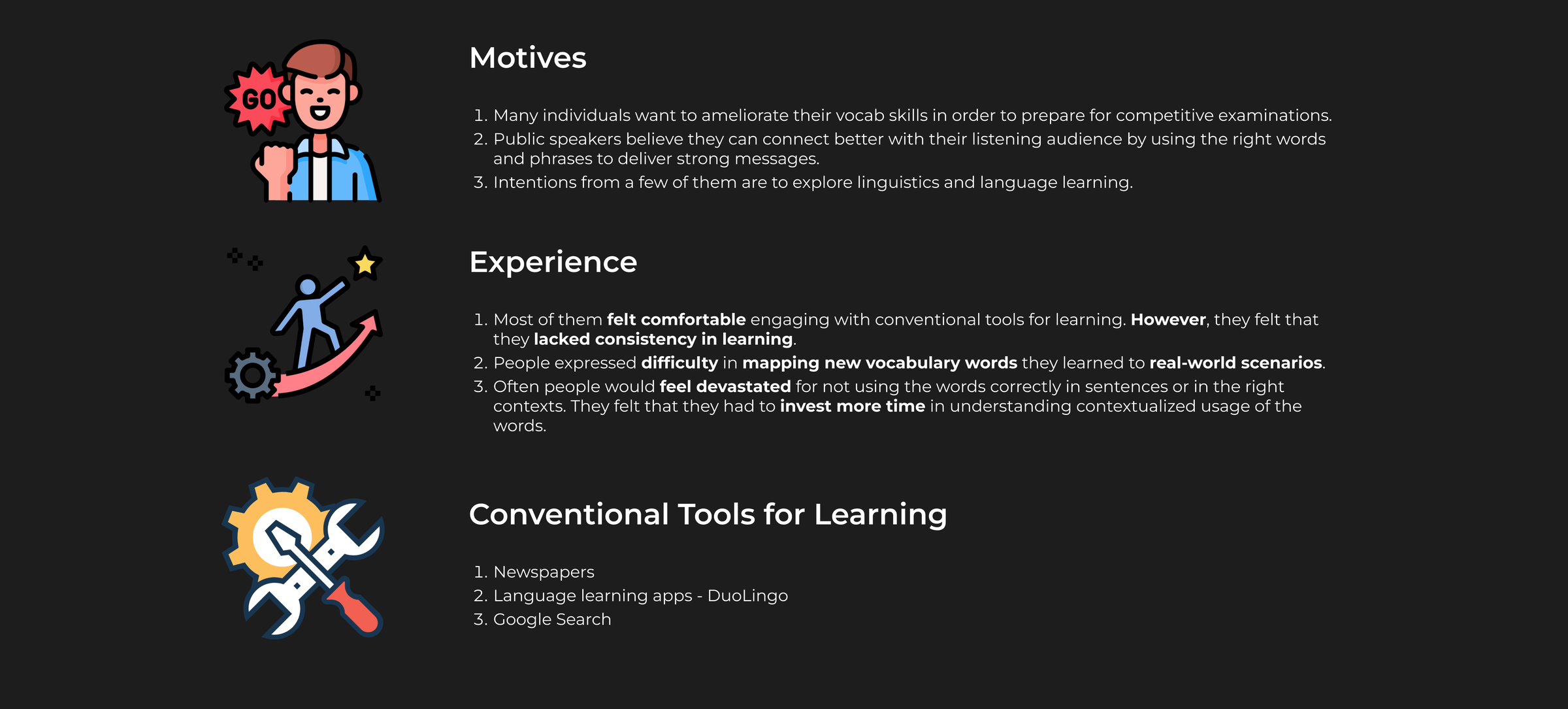


With four ideas for the concept, I proceed to the design phase to transform ideas onto interface screens and then to testable prototypes.
The discovery of users' pain points, motives, and experiences led me to design the concept for vocabulary learning. I asked one question to establish the concept:
Enjoyable curated learning
Although the conventional tools serve the purpose of vocabulary learning, it lacks a congenial experience.
Contextualized learning
Specific contexts and sentence usages must be provided as examples for the user to learn and understand better.
Connection with the real-world scenarios
It is important that users inculcate their learnings in their everyday communication.
Personalized experience
Users can get introduced to words aligned with their interests.
Simple tasks that show and allow users to learn how they can use the word given in a sentence and situation.
Sample digital cues that describe the accurate meaning of the word given that the word may take different forms of meaning depending on parts of speech.
Users may also personalize their learning experience according to their pace of learning i.e, by customizing how many words they want to learn.
Based on the user research and findings, I decided to design an app for the target users. I brainstormed on a few ideas and jotted the essential features needed for the application: Vocab Cue Cards with contextual cues and tasks, Favourite words, and Profile setup.
First, I started by constructing a simple user-flow diagram followed by wireframes and high-fidelity mockups.

The onboarding process involves collecting necessary information from the users for personalized learning goals.
There are three main navigation items: the Home screen that presents the cue cards with words, the Statistics screen that displays the user's learning progress,s and the liked words to screen.
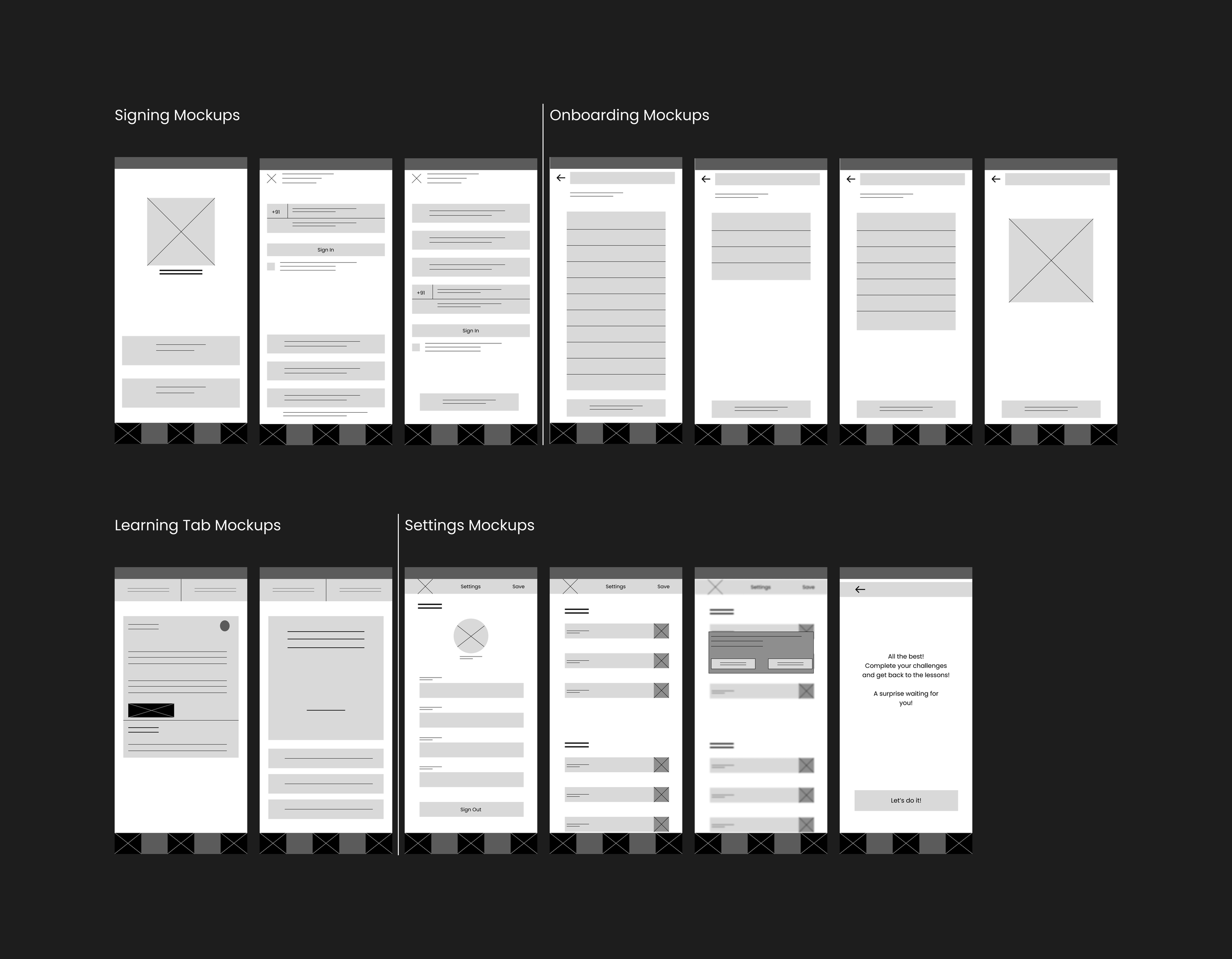
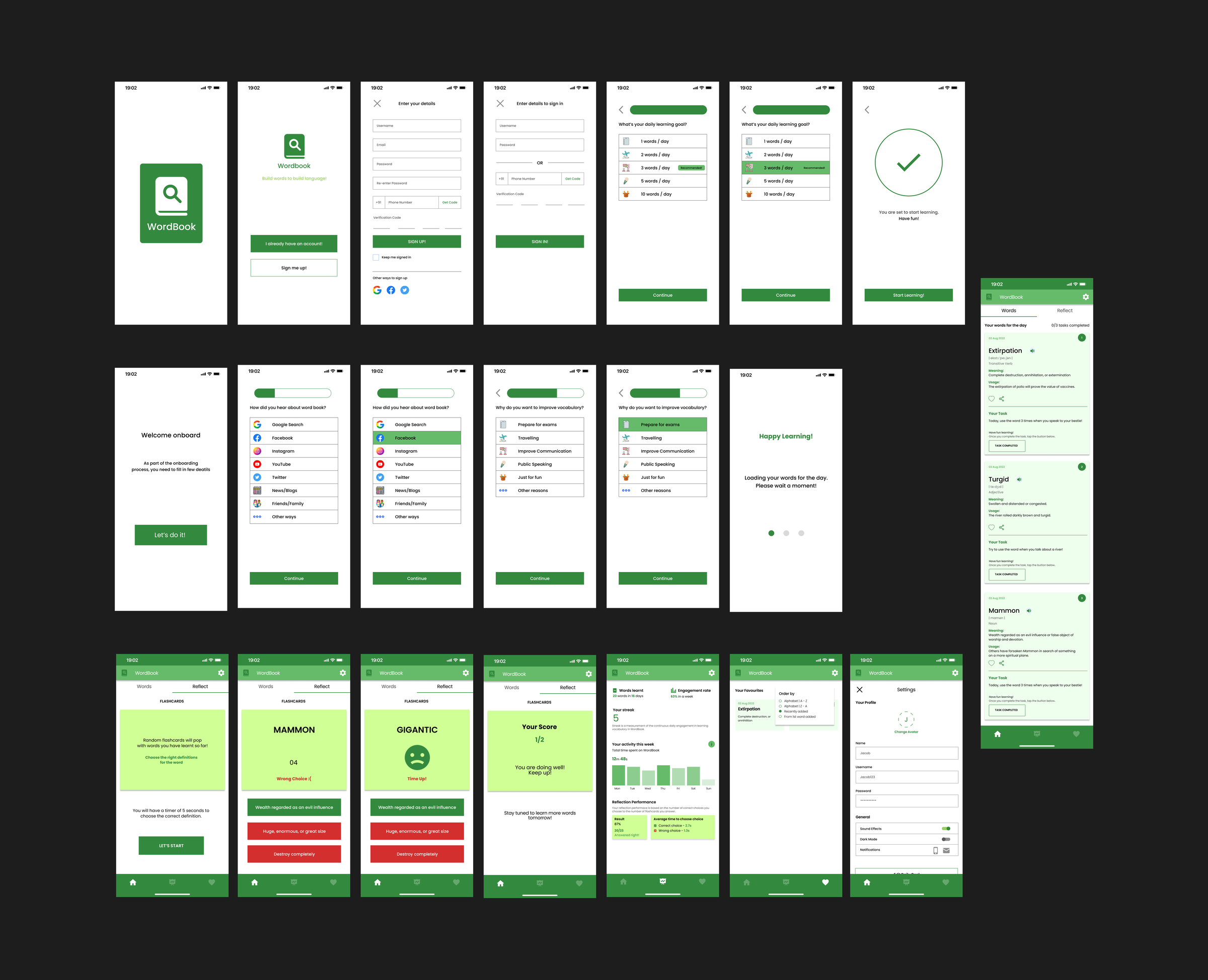
The existing users who sign out of the application frequently after using it can sign in quickly in two ways: by entering a username & password or by authenticating the account using a phone number.
The new users can sign up by providing relevant information.
A checkbox is displayed to allow users to decide if they want to be signed into the application.
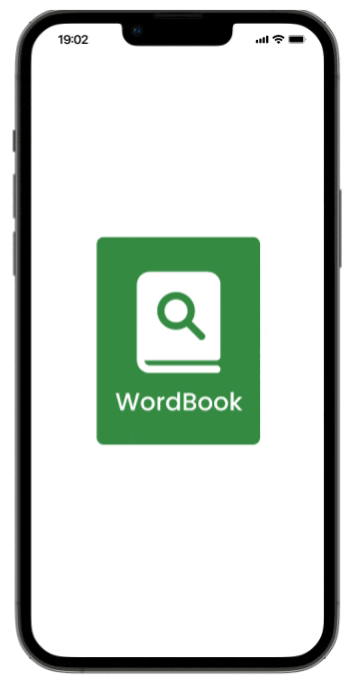
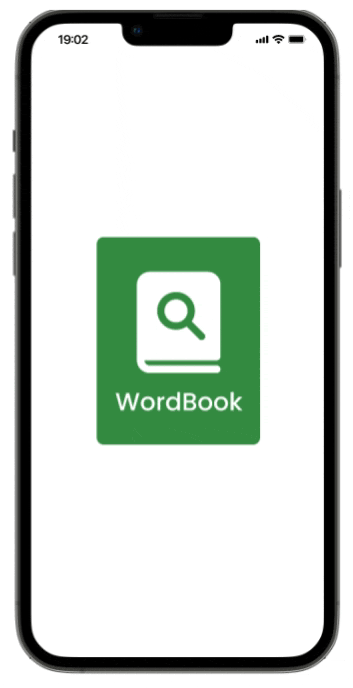
The users select options to understand their purpose and select the number of words they want to learn every day.
The option to customize the no. of words they learn every day ensures that they have a personalized learning goal.
The reflect tab allows users to take a short quiz and evaluate the number of words they can recollect.
This short quiz pops random words the users have learned through the app. The repeated revision improves muscle memory.
A timer is introduced to make the quiz more competitive.
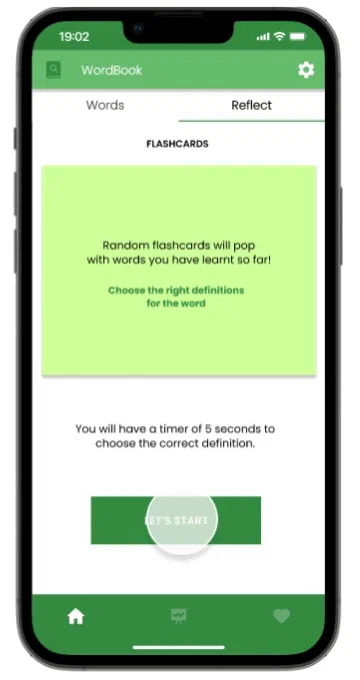
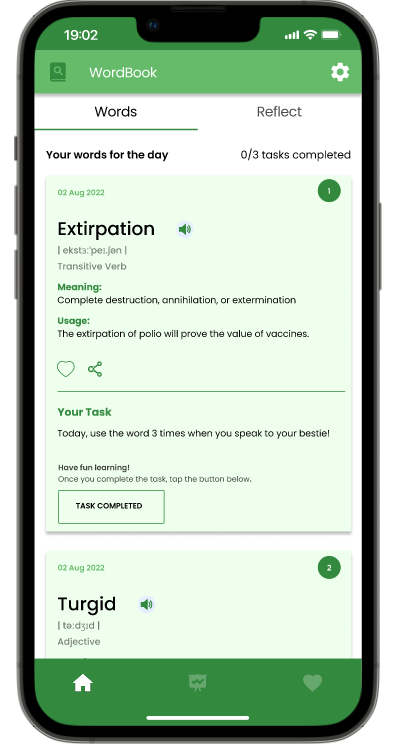
Tabs
Users learn words and complete tasks in the words screen and move onto the reflecting screen to attempt a short quiz.
Cue Cards
- Meaning of the word with relevant usage examples enables users to understand and interpret the word effectively.
- An audio feature to listen to the exact pronunciation of the word.
- Users can also like the words and access them from their favorite screen.
Task Component
- The tasks allow users to use the word in a real-world context.
- The users complete different tasks for different words and engage in real-time learning.
I conducted remote testing of the high-fidelity prototype with three participants. All the participants were students attending college and had different purposes to use the application.
I explained to them about the Figma interaction clues for the prototypes. During testing, I did not intervene while they were using the prototype. But I observed their interactions.
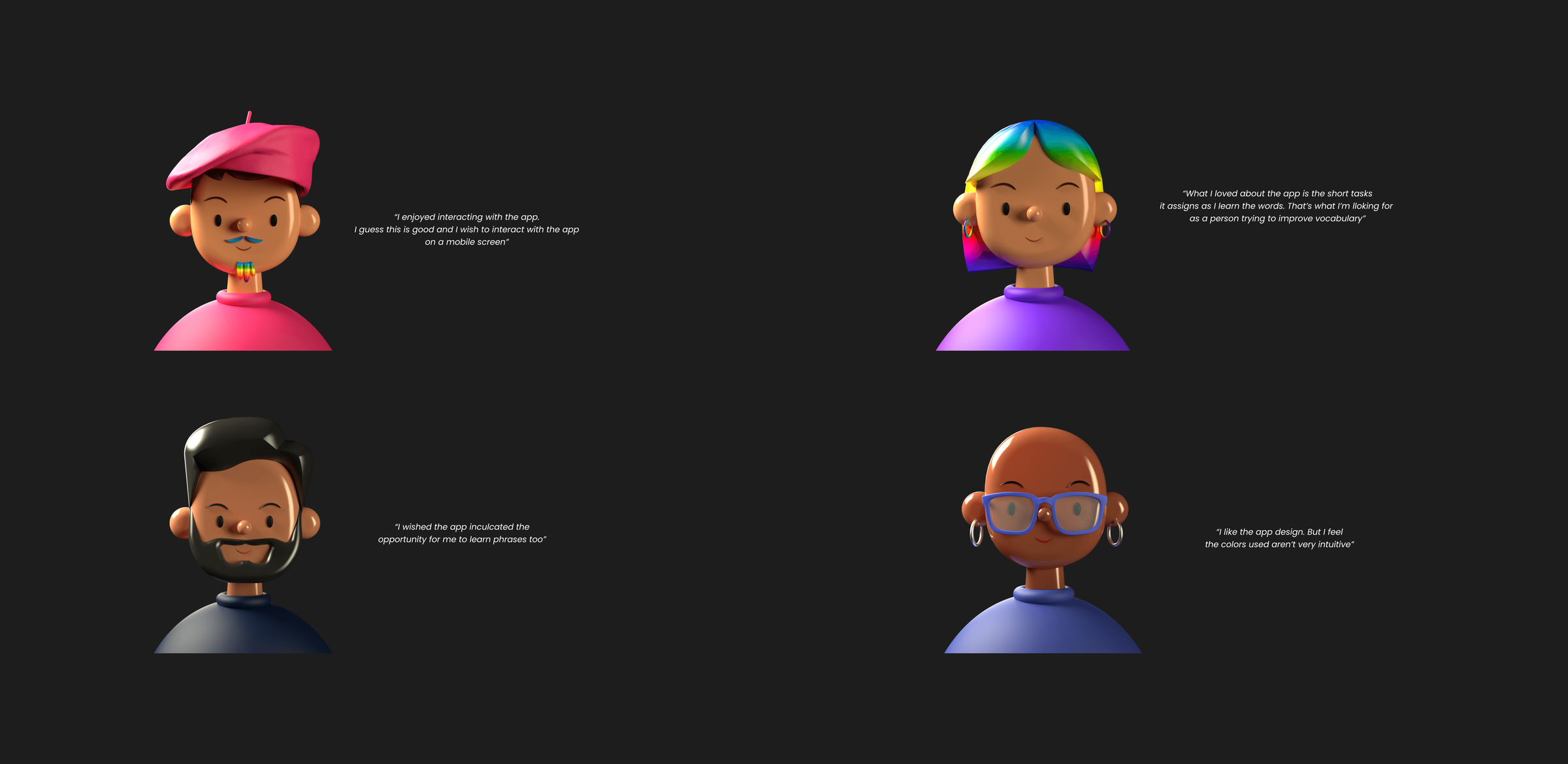
It is important to focus on connecting the users to real-world contexts for vocab-building applications.
Colors and typography greatly affect the way users interact with the application.
While creating prototypes, it is important to consider every interaction state.